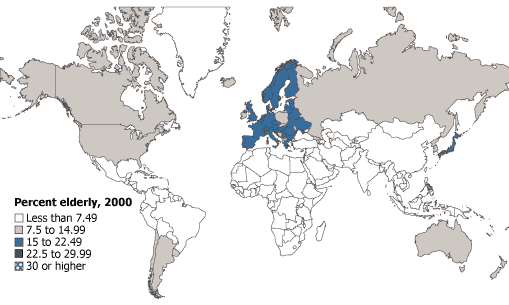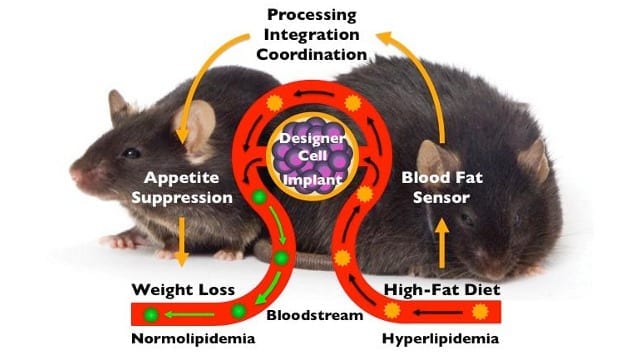
The explosive growth of the human population—from 2.5 billion to 6 billion since the second half of the 20th century—may have already started changing how infectious diseases emerge
In mid-April 2009, samples from two California children suffering from the flu arrived at the Centers for Disease Control and Prevention in Atlanta for further investigation; something didn’t seem normal about the particular flu strains they had. Local clinics and flu surveillance staff had detected a virus that had a unique genetic makeup, different from any known human flu virus. It was entirely new to science.
That was the beginning of the 2009 swine flu pandemic. Countries around the world took notice and prepared for possible outbreaks, the World Health Organization sent out guidelines to ministries of health and vaccines were developed in a matter of months. The virus, which may have started infecting people first in Mexico, spread across the globe, infecting millions of people and killing thousands before running its course, with the pandemic coming to an end in August 2010.
The virus was a new strain of H1N1, the influenza virus involved in the devastating1918 Spanish flu pandemic, which killed between 30 million and 50 million people worldwide, according to the U.S. Department of Health and Human Services, more than died during World War I. The emergence of the new H1N1 in 2009 was a reminder that despite the unprecedented progress in treating infectious disease in the past decades, the looming shadow of a deadly pandemic still persists.
In fact, with every mysterious virus that surfaces, be it the 2009 swine flu, the 2002 SARS coronavirus, or most recently, MERS (Middle East Respiratory Syndrome, a viral respiratory illness that has emerged around the Arabian Peninsula and killed half of the people who have had it), the same questions come to the minds of researchers and health authorities: Is this the virus that’s going to cause the next pandemic? And will humanity be able to stop it?
And now, new challenges are being added to existing ones: The latest population projections from the United Nations, announced in a new report last summer, estimate that the world’s population will reach 9.6 billion people by mid-century, and 11 billion by 2100.
The sheer number of people, their interactions with animals and ecosystems, and the increase in international trade and travel are all factors that will likely change the way humanity deals with preventing and treating epidemics, experts say.
The Latest Google Headlines on:
Disease Outbreaks
[google_news title=”” keyword=”Disease Outbreaks” num_posts=”10″ blurb_length=”0″ show_thumb=”left”]
The Latest Bing News on:
Disease Outbreaks
- What is bluetongue disease? Farmers urged to remain vigilant amid fear of future outbreakson May 7, 2024 at 6:48 am
but the disease can impact livestock farms, and cause productivity issues.” Farmers are being urged to be vigilant, source their livestock responsibly, and practise good biosecurity to prevent the spread of bluetongue. Previous outbreaks of bluetongue in ...
- Future pandemics will have the same human causes as ancient outbreaks − lessons from anthropology can help prevent themon May 7, 2024 at 5:33 am
The last pandemic was bad, but COVID-19 is only one of many infectious diseases that emerged since the turn of this century. Since 2000, the world has experienced 15 novel Ebola epidemics, the global spread of a 1918-like influenza strain and major outbreaks of three new and unusually deadly coronavirus infections: SARS,
The Latest Google Headlines on:
Infectious diseases
[google_news title=”” keyword=”infectious diseases” num_posts=”10″ blurb_length=”0″ show_thumb=”left”]
The Latest Bing News on:
Infectious diseases
- Study identifies signifiers of severe COVID-19 disease and deathon May 7, 2024 at 6:48 am
Why do some people with COVID-19 experience little more than a sniffle while others end up on a ventilator? And among critically ill patients, why do some eventually recover while others do not?
- T2 Biosystems Announces Letter of Intent to Enter Strategic Partnership for Lyme Diseaseon May 7, 2024 at 5:59 am
Advances plan to launch T2Lyme Panel for detection of early Lyme diseaseFiled Pursuant to Rule 433Issuer Free Writing Prospectus dated May 6, 2024Relating to Preliminary Prospectus dated May 6, ...
- Advancement in treatment and health prevention strategies for Infectious Diseaseson May 7, 2024 at 2:14 am
Since 2003, the world has seen over 15 million human deaths due to diseases and pandemics, as well as immense loss of quality of life from food and water safety hazards, which are One Health-related ...
- Global Veterinary Infectious Disease Diagnostics Market to Witness Exponential Growth, Reaching USD 4.9 Billion by 2033on May 6, 2024 at 8:37 pm
The global veterinary infectious disease diagnostics market is projected to have a high-paced CAGR of 10.1% during the forecast period. The current valuation of the veterinary infectious disease ...
- Canadian Hub for Health Intelligence and Innovation in Infectious Diseases awarded $72 millionon May 6, 2024 at 1:15 pm
Four research programs in the Canadian Hub for Health Intelligence and Innovation in Infectious Diseases (HI 3) have received $72 million in federal funding from the Canada Biomedical Research Fund ...
- Gates, Novo Nordisk Foundation And Wellcome Commit $300 Million To Climate Change, Infectious Diseases And Nutritionon May 6, 2024 at 7:57 am
The charitable trifecta — juggernauts of medical funding and philanthropy — warned money and attention for global health problems is drying up around the world and that the world’s poorest will bear ...
- Top riders support awareness campaign for devastating infectious diseaseon May 5, 2024 at 11:03 pm
You are only as strong as your weakest point” is the message of this year’s Strangles Awareness Week (6-12 May) – as top names get behind the campaign. The awareness week, a collaboration launched ...
- Global health heavyweights team up for climate, disease fundingon May 5, 2024 at 9:10 pm
Three of the biggest global health funders have joined forces for the first time in a $300 million partnership aimed at tackling the linked impacts of climate change, malnutrition, and infectious ...
- WHO Overturns Dogma on Airborne Disease Spread. The CDC Might Not Act on It.on May 5, 2024 at 11:05 am
Peg Seminario, an occupational health and safety specialist in Bethesda, Maryland, welcomed the shift after years of resistance from health authorities. "The dogma that droplets are a major mode of ...
- Infectious disease DNA tester Karius nets $100M to expand liquid biopsy reachon May 3, 2024 at 9:18 am
The infectious disease diagnostic developer Karius has secured another $100 million to help expand the reach of its microbial DNA test designed to detect more than 1,000 different pathogens from a | ...










